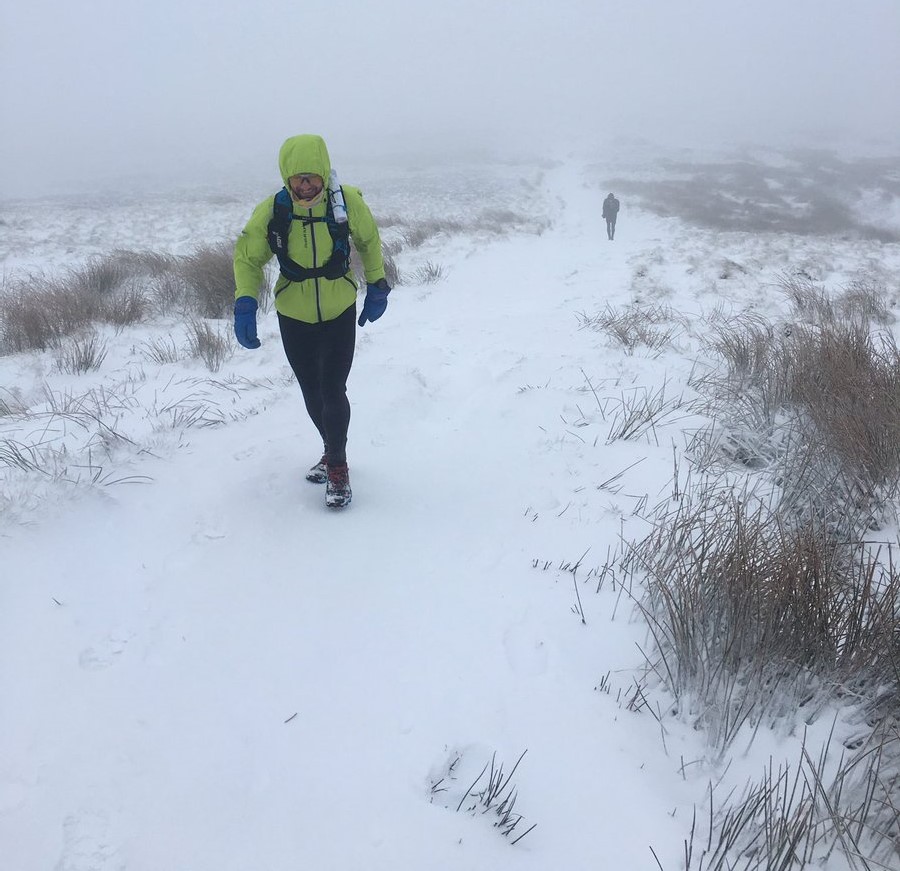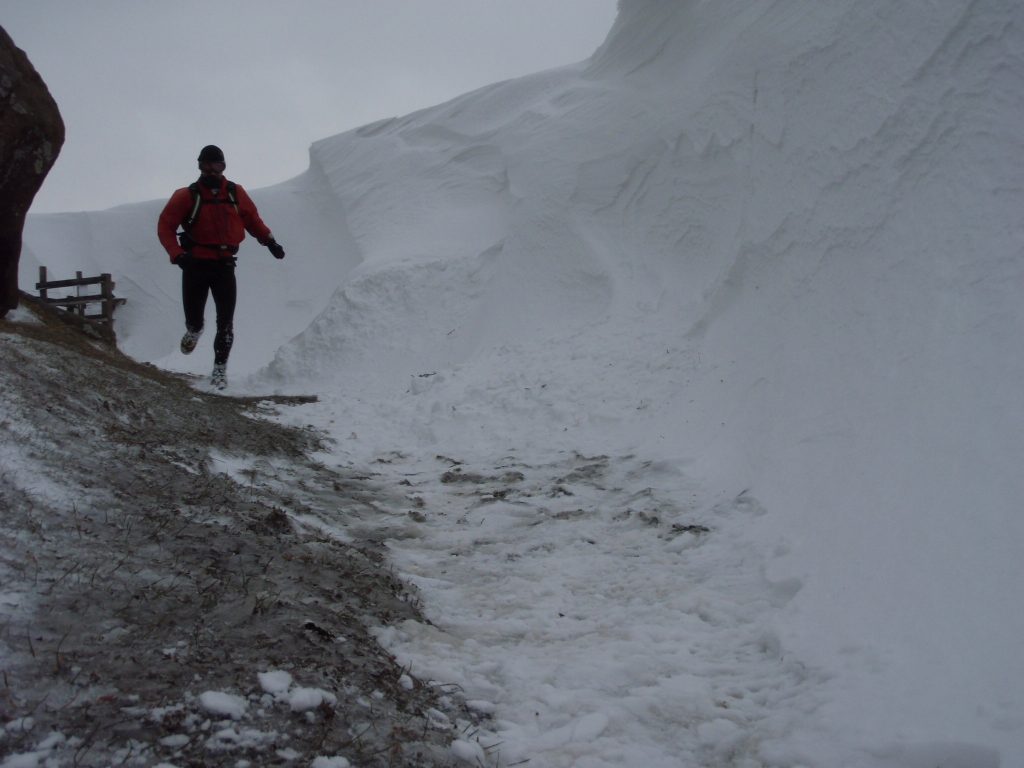David Taylor, Fell Running Guide
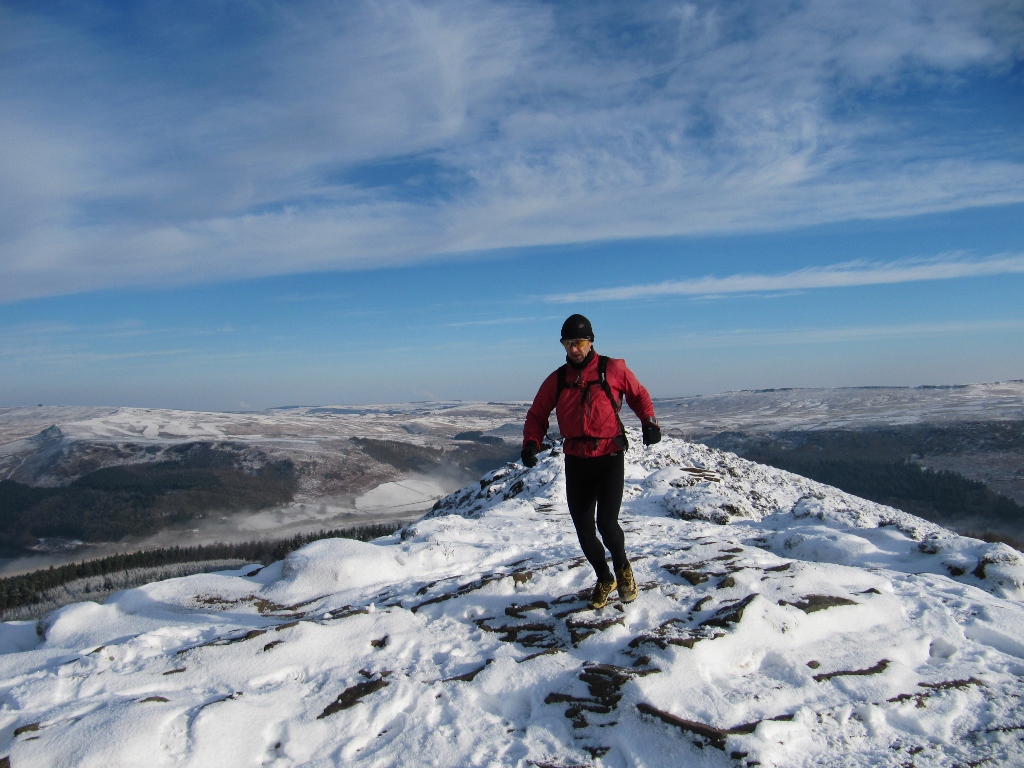
Out in the cold?
It’s winter. The weather is cold, grey, wet and windy and it’s dark by 4pm. Fell running at this time of year just isn’t much fun!
However, what about those blue sky days where the air is cold and crisp? What about those days after it has snowed and the weather has calmed down but it is still cold enough that the snow hasn’t turned to slush? What about those dark nights under a big moon and the lights of the nearest village twinkling in the distance – those are great days to be out on the hills!
With a little bit of planning and some sensible precautions we can get out and make the most of those good weather, winter days.
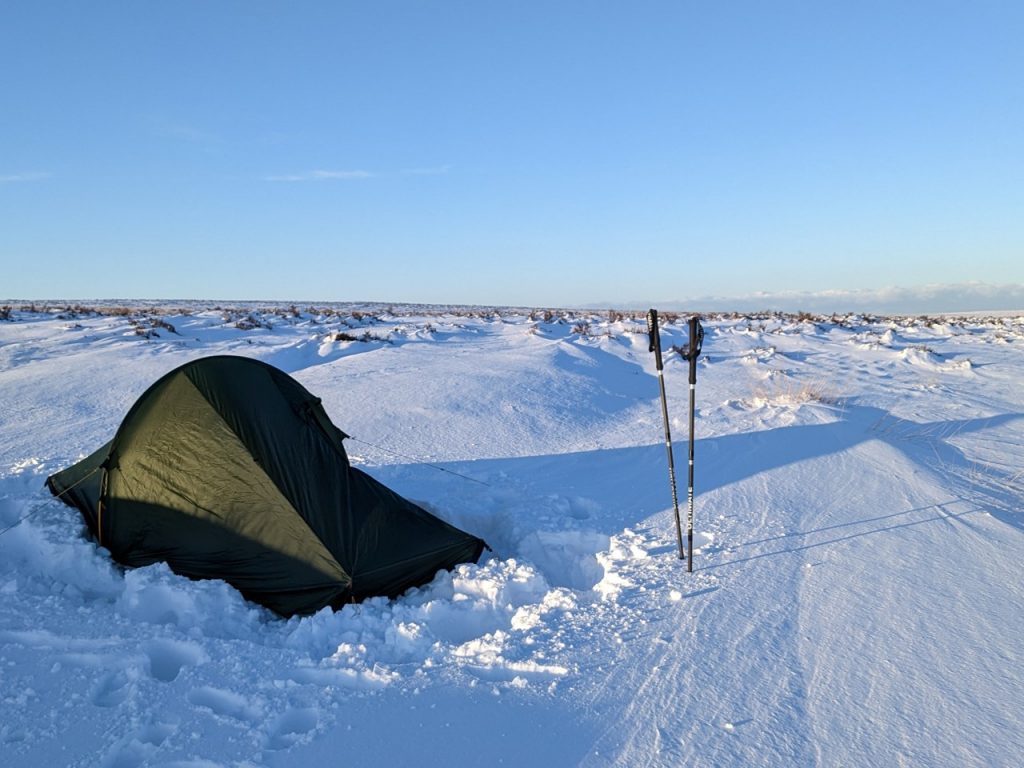
Planning
To make the most of our winter adventures we need to do a bit of planning. The basic plan will include; where do you want to go, what do you want to do, what do you need to take and who will go with you (you may be safer in a small group rather than solo). The “when” will need to be flexible based on the weather.
In fact the weather will often be the biggest factor when planning. Weather forecasting is fairly reliable nowadays, particularly when it comes to predicting extremes such as severe storms or periods of settled weather. We need to look for forecasts of high pressure which tend to last for several days and give settled conditions and these can be predicted several days in advance. Rather than looking at the general forecast it is better to look at the more specialist mountain forecasts such as those provided by the Met Office and the Mountain Weather Information Service (MWIS). These give specific forecasts for different mountain regions and even individual summits. Having a basic understanding of meteorology, such as how temperature drops and windspeed increases with elevation, and knowing which direction the wind will be blowing from can help us make the decision of where to go. This might mean choosing Snowdonia instead of the Lake District for example or choosing a north / south valley instead of an east / west one.
It is also important to look at sunset times so as not to get caught out – a night time fell run might not be what you had planned!
Also bear in mind that poor weather conditions will make progress slower than in benign conditions. Boggy ground, head winds, deep snow and icy ground will all slow you down. You will also spend more time navigating in poor visibility.
Navigation Skills
Some people limit the places they go to because they aren’t confident enough to navigate in unfamiliar areas. This is very limiting – imagine all those fantastic locations that they never get to see because they are worried about getting lost!

You don’t need to be an expert orienteer in order to stay safe in the hills, just an understanding of map symbols (particularly contour lines), knowledge of how to work out which direction you are facing using a compass, and a reasonable idea of how long it takes you to cover a kilometre on different types of terrain. There is nothing wrong with using mapping on your phone as long as you have a back up system if your battery runs out.
Dave offers great navigation courses – you can check those out on his website if you are keen to up your skills. Ed.
Equipment
Have you heard the saying “There’s no such thing as bad weather, just the wrong clothing!”? Well it’s a load of ****! Show me the jacket that is going to keep me safe in winds gusting 100 miles per hour or the gloves that are going to prevent me getting struck by lightning! If the weather is that bad it isn’t safe, regardless of your kit.
Show me the jacket that is going to keep me safe in winds gusting 100 miles per hour or the gloves that are going to prevent me getting struck by lightning! If the weather is that bad it isn’t safe, regardless of your kit.
It goes without saying that you will need different kit in winter than in summer. Some items such as waterproofs are needed all year round but for winter you will need warm clothing both for wearing during the activity and also for when you stop. An insulating jacket that can be quickly put on over the top of existing clothes is an ideal addition. Down (feathers) and synthetic filled jackets are good for the job but bear in mind that down loses its effectiveness if it gets wet so a synthetic top might be a better choice for British winter weather.
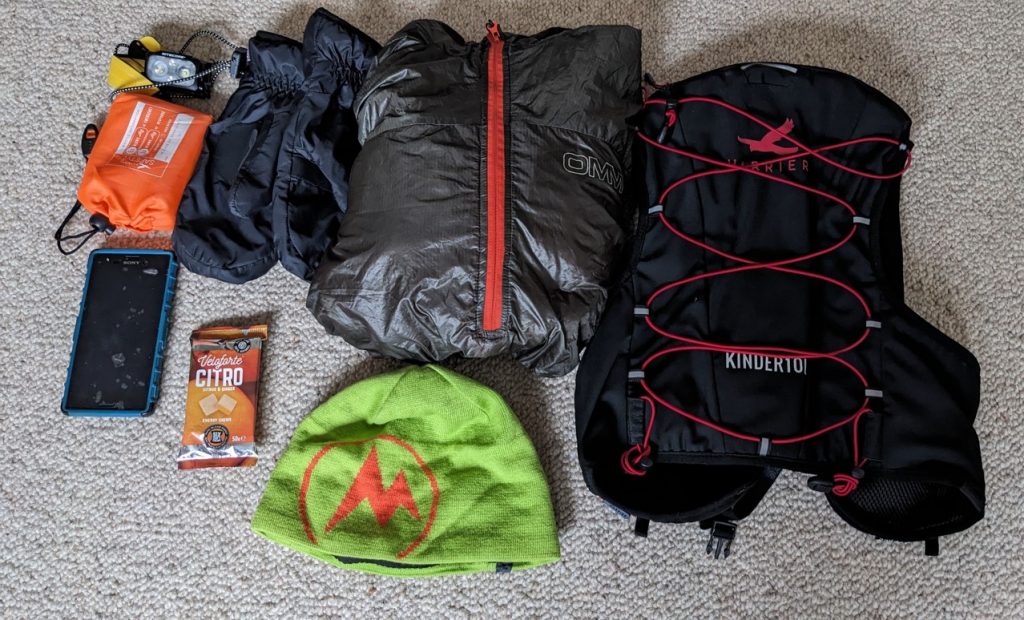
Eye protection is vital in snowy conditions. If snow is blowing into your eyes you can’t see where you are going! Mountain bike type glasses are a minimum requirement and skiing goggles might be better. Also think about U.V. protection, the glare of the sun off lying snow can damage your eyes so sunglasses will be needed in some situations.
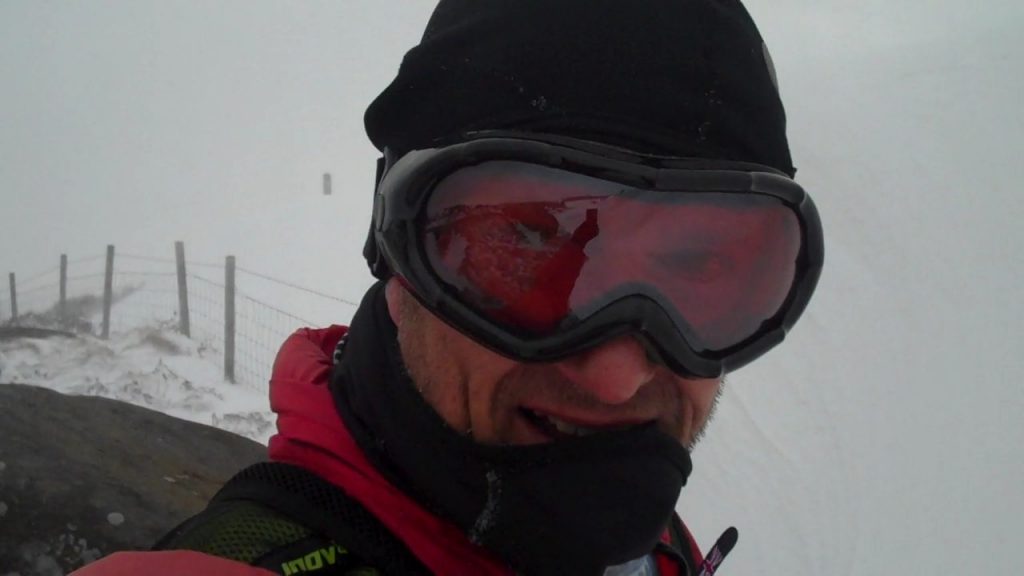
You also need to think about the equipment you may need if something goes wrong. A badly twisted ankle might not be life threatening in summer but in winter could be much more serious if you need to stop and wait for rescue. Consider carrying an emergency bivvy bag and a small group shelter and also a head torch (even if you plan to be off the hill before sunset). Cold weather drastically reduces the battery life of mobile phones so keep it well insulated, maybe in an inside pocket next to your warm body, and limit the amount of time you use it. Those lovely snowy conditions will make great photos but if you are taking them with your phone the battery may give up! Consider putting your phone in airplane mode or even switching it off completely and using a different device to take photos.
In cold conditions we burn fuel in the form of calories in order to stay warm so extra food will be needed compared to doing the same activity in summer. It is important to stay hydrated in winter as well as summer so don’t neglect to take on fluids, but be aware that your drink might freeze in very cold weather.
If you are heading into serious mountain territory then an ice axe and crampons are essential, along with experience of how to use them. In other situations where it is very cold you are still likely to encounter ice or frozen terrain. Here a pair of micro-spikes will be very useful and will allow you to walk, and even run, safely on icy ground. These can easily be slipped on and off over your trainers or boots, they don’t require specialist footwear.
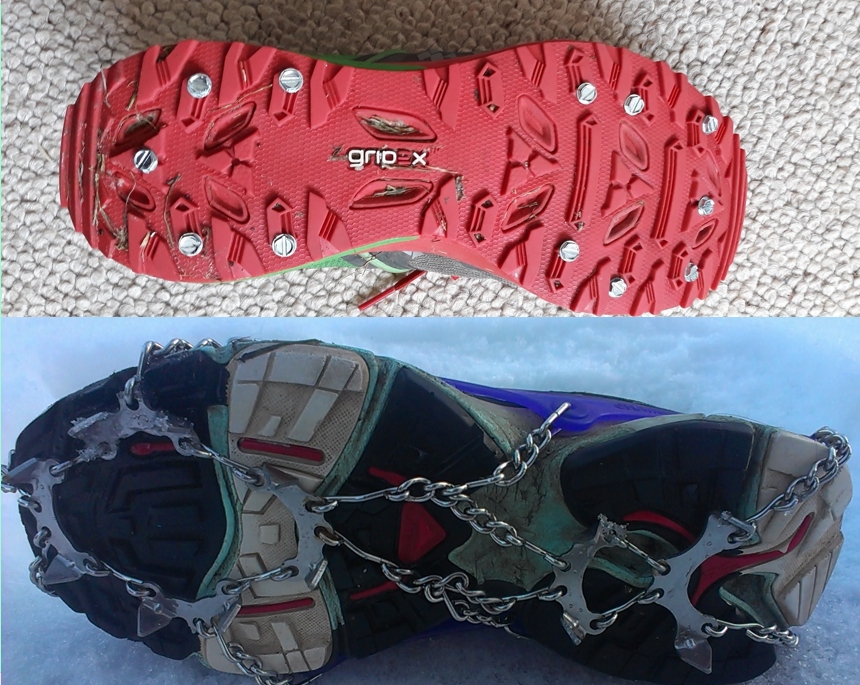
A spare hat and gloves (in addition to the ones you plan to wear) take up little space and are a good back up if yours get wet or you lose one. The simple task of re-tying a shoe lace can easily result in a lost glove in windy conditions. Mittens are a good back up- they will keep your fingers warmer than gloves, but at the expense of dexterity.
All the extra kit will mean that you’ll need a bigger pack which in turn will be heavier – another thing to take into account when planning the time you will take on your route.
Training
It can be difficult to stick to a training plan in winter, especially if the weather is bad. That long run that would be enjoyable in good weather can be a miserable experience if it’s raining heavily and blowing a gale. The key here is to be flexible – I prefer to switch my sessions around and do something shorter and harder when the weather is bad. For example I might do some type of intervals or a threshold run and switch the long run to a better day. Again it helps to look at the weather forecast for several days in advance and plan your sessions accordingly. You might also choose to do gym or strength work on bad weather days and there’s always the treadmill and turbo trainer if it’s so bad that you can’t get outside. (It has to be very bad for me to resort to the treadmill!)
Winter might be a time when you don’t have any “A” races on the immediate horizon so it’s not the end of the world if your training isn’t totally structured like it might be later in the year. It’s fine to make the most of the winter conditions with activities that still give an aerobic stimulus. Hill walking, hiking and camping are all good alternatives, especially if done with a reasonably heavy pack. A few days not running won’t a have a huge negative effect on your fitness and it’s fine to replace it with other activities that you enjoy.
So get planning, sort out your kit and get out for a safe winter adventure!
Dave previously wrote a great article on the Xhale Coaches’ Hub about training for a trail/fell running season. Packed full of great tips about how to maximise your season it is a good place to start if you are thinking about running more hills – or even if you are already a quality fell runner.

About the author
Dave Taylor is an experienced fell runner and running coach and has been English Fell Running Champion for the V50 age category and runner up for the British V40 Championship.
He is an Xhale coach and offers individual coaching sessions and training plans for runners of all abilities: www.fellrunningguide.co.uk
Want your content featured?
If you would like to input to our Coaches’ Hub – or there is a topic you would like us to write about – why not send us your ideas? We are always looking for good content and it helps to promote your business.
Email: caroline@trainxhale.com

